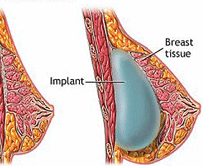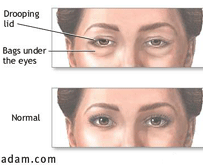 The most important aspect of plastic surgery is choosing a surgeon with experience, reputation, and success necessary, and ensuring that all breast augmentation surgery questions are answered beforehand. The surgeon will not perform surgery until the patient has been fully reviewed, instructed and has no questions regarding the breast implants procedure. Patients that do not feel confident with the procedure are not advised to continue. In the consultations, surgeon will give instructions to prepare for surgery, including recommendations on eating and drinking, smoking, and taking or avoiding certain vitamins and medications. The plastic surgeon also have to consider the original size and shape of the breasts, skin type, and other factors before breast augmentation to advise the patient of the options available and to see if the patient’s goals are realistic. Besides surgeon should explain the type of anesthesia to be used, the type of facility where the surgery will be performed, and the costs involved.
The most important aspect of plastic surgery is choosing a surgeon with experience, reputation, and success necessary, and ensuring that all breast augmentation surgery questions are answered beforehand. The surgeon will not perform surgery until the patient has been fully reviewed, instructed and has no questions regarding the breast implants procedure. Patients that do not feel confident with the procedure are not advised to continue. In the consultations, surgeon will give instructions to prepare for surgery, including recommendations on eating and drinking, smoking, and taking or avoiding certain vitamins and medications. The plastic surgeon also have to consider the original size and shape of the breasts, skin type, and other factors before breast augmentation to advise the patient of the options available and to see if the patient’s goals are realistic. Besides surgeon should explain the type of anesthesia to be used, the type of facility where the surgery will be performed, and the costs involved.
Breast augmentation surgery
 Today, breast augmentation cosmetic procedures have less risk of complication than ever. Breast augmentation is performed on an outpatient basis using a general or local anesthesia. The breast augmentation procedure usually takes about two hours. The length of the procedure varies according to the techniques used, the placement of the implants, the patient’s anatomy, and the type of anesthesia used. One of the more frequent techniques used requires an incision under the lower portion of the breast near the chest wall or under the lower portion of the areola (the darker area around your nipple). After the incision is made, a pocket is created under the breast tissue or beneath the chest wall muscle. The implant is securely positioned in the pocket, and small sutures are used to close the incision. When procedure has been completed, the patient will be taken into the recovery area and continue to be monitored. The breasts will be wrapped in a dressing that will not be removed for a few days. Breast augmentation surgery , like all surgery, involves some risk of infection, so patients should be careful after breast augmentation surgery to keep incision clean and call their doctor at the first sign of infection.
Today, breast augmentation cosmetic procedures have less risk of complication than ever. Breast augmentation is performed on an outpatient basis using a general or local anesthesia. The breast augmentation procedure usually takes about two hours. The length of the procedure varies according to the techniques used, the placement of the implants, the patient’s anatomy, and the type of anesthesia used. One of the more frequent techniques used requires an incision under the lower portion of the breast near the chest wall or under the lower portion of the areola (the darker area around your nipple). After the incision is made, a pocket is created under the breast tissue or beneath the chest wall muscle. The implant is securely positioned in the pocket, and small sutures are used to close the incision. When procedure has been completed, the patient will be taken into the recovery area and continue to be monitored. The breasts will be wrapped in a dressing that will not be removed for a few days. Breast augmentation surgery , like all surgery, involves some risk of infection, so patients should be careful after breast augmentation surgery to keep incision clean and call their doctor at the first sign of infection.
Breast augmentation anesthesia
There are a few choices that person may have for anesthesia although not all surgeons and their practices will offer every one. Breast augmentation can be performed with a general anesthesia, so patient will sleep through the entire operation. Some surgeons may use a local anesthesia, combined with a sedative to make person drowsy and relaxed, but awake and some discomfort may be felt.
Anesthesia helps to forget about surgery and healing process is better and faster when one does not feel or remember pain. As soon as your body is cut or manipulated it “goes to work”. The heart rate quickens, body starts to repair the injury with vengeance. Well, anesthesia blocks this reaction until after the surgery is over. The surgery patient is having, as well as health, habits etc., all play important roles in which type of anesthesia is right.
Nonsurgical breast augmentation method
Nonsurgical breast augmentation methods contain a wide variety of options: herbal remedies, pills, creams, and other devices. Some persons know that breast implants cost much money, and understand nonsurgical breast augmentation as an uncostly alternative, while others feel that the other advantages of a non-surgical breast enhancement are more important, including lower risk of side effects, natural ingredients, and no convalesce period. Nonsurgical breast augmentation may not offer the instantresults guaranteed by implants, but a lots of women who have chosen non-surgical breast augmentation method assert that the results come within weeks or months and are permanent.
 These
These  Breast implant prices average is from $4,000 to $9,000 per procedure, although specific
Breast implant prices average is from $4,000 to $9,000 per procedure, although specific  Within several days, the gauze dressings, if patient have them, will be removed, and person may be given a surgical bra. It should be worn as directed by surgeon. A burning sensation in nipples may be experienced for about two weeks, but this will subside as bruising fades. Stitches will come out in a week to 10 days, but the swelling in breasts may take three to five weeks to disappear. The patient should be able to return to work within a few days, depending on the level of activity required for the job. Surgeon’s advices should be followed on when to begin exercises and normal activities. Breasts will probably be sensitive to direct stimulation for two to three weeks, so much physical contact should be avoided. Scars will be firm and pink for at least six weeks. Then they may remain the same size for several months, or even appear to widen. After several months, scars will begin to fade, although they will never disappear completely. Generally, post-operative instructions will include a lot of rest and limited movement in order to help speed up the breast augmentation recovery time.
Within several days, the gauze dressings, if patient have them, will be removed, and person may be given a surgical bra. It should be worn as directed by surgeon. A burning sensation in nipples may be experienced for about two weeks, but this will subside as bruising fades. Stitches will come out in a week to 10 days, but the swelling in breasts may take three to five weeks to disappear. The patient should be able to return to work within a few days, depending on the level of activity required for the job. Surgeon’s advices should be followed on when to begin exercises and normal activities. Breasts will probably be sensitive to direct stimulation for two to three weeks, so much physical contact should be avoided. Scars will be firm and pink for at least six weeks. Then they may remain the same size for several months, or even appear to widen. After several months, scars will begin to fade, although they will never disappear completely. Generally, post-operative instructions will include a lot of rest and limited movement in order to help speed up the breast augmentation recovery time.